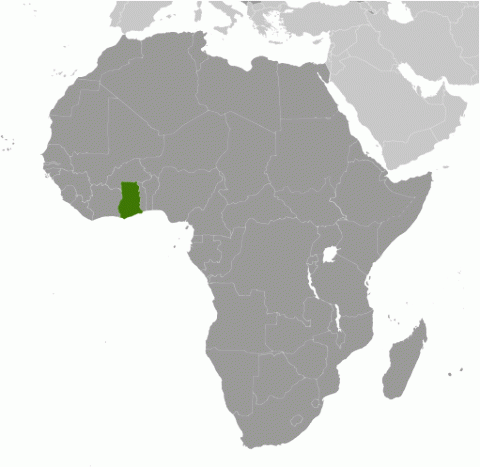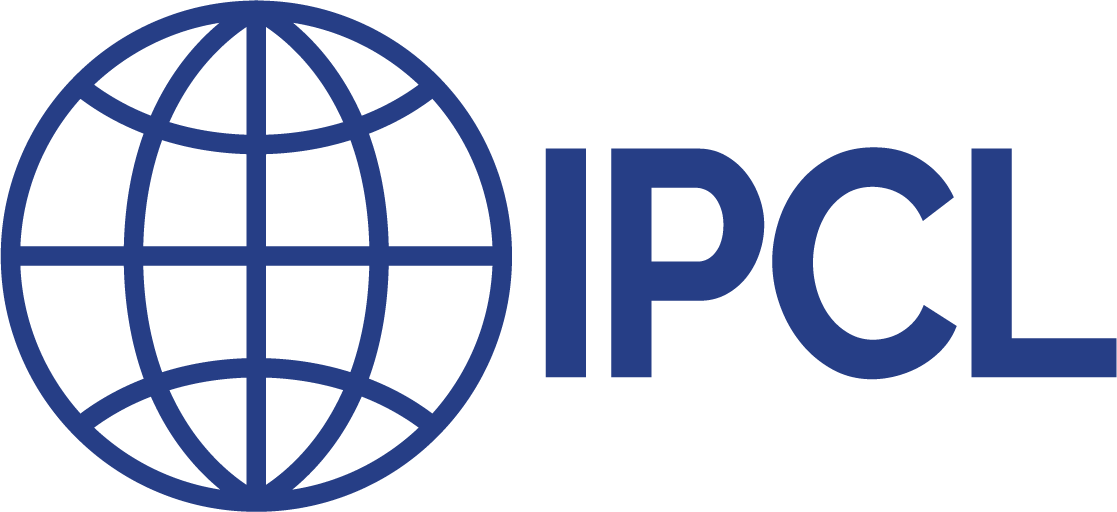Child Labor and Forced Labor Reports
Ghana


Moderate Advancement
In 2024, Ghana made moderate advancement in efforts to eliminate the worst forms of child labor. The government ratified International Labor Organization Convention 188, which defines 16 years as the minimum age for work on fishing vessels. The Child Labor Unit and the Human Trafficking Secretariat provided training on child labor concepts and trends, investigation, and prosecution to at least 565 individuals across sectors in both civil and criminal enforcement. In addition, the government signed the Child Labor in Cocoa Coordinating Group Framework of Action, which addresses child labor in the West African cocoa sector by seeking to tackle its drivers, improving access to education and training, strengthening social protection mechanisms and social services, and improving cocoa traceability systems and child protection case management systems. Furthermore, the government continued to expand its child labor monitoring mechanism, launching a national database used by stakeholders to record incidents and coordinate to combat child labor. The government also began implementing the Ghana Accelerated Action Plan Against Child Labor (2023–2027) and launched three programs with international partners, civil society, and industry to address child labor in the cocoa sector. Although the government made meaningful efforts in all relevant areas during the reporting period, it does not meet the international standard for prohibiting the use of children in illicit activities because Ghana has not established any such law. In addition, the government lacks a mechanism to assess civil penalties. Finally, inadequate office facilities, limited transportation, and other resource constraints hampered the government’s ability to adequately enforce labor laws.
| Children | Age | Percent and Population |
|---|---|---|
| Working | 5 to 14 | 4.1% (335,541) |
| Boys | 4.3% | |
| Girls | 4.0% | |
| Urban | 2.5% | |
| Rural | 5.9% | |
| Hazardous Work by Children | 15 to 17 | 15.6% (345,662) |
| Boys | 15.9% | |
| Girls | 15.2% | |
| Urban | 11.8% | |
| Rural | 19.9% | |
| Attending School | 5 to 14 | 92.0% |
| Combining Work and School | 7 to 14 | 3.7% |
| Sector/Industry | Percent of Population |
|---|---|
| Agriculture | 63.5% |
| Industry | 10.8% |
| Services | 25.6% |
| Sector/Industry | Activity |
|---|---|
| Agriculture | Producing cocoa (including chocolate, cocoa butter, cocoa paste, and cocoa powder), through land clearing, using machetes and cutlasses for weeding, breaking cocoa pods, collecting cocoa pods with a harvesting hook, transporting heavy loads,† and exposure to agrochemicals.† Fishing, including for tilapia, which involves preparing bait, nets, and fishing gear; launching, paddling, and draining canoes; diving for fish, casting and pulling fishing nets, and untangling them underwater; sorting, picking, cleaning, smoking, transporting, and selling fish; cleaning and repairing nets; and building and repairing boats. Other agricultural activities, including herding livestock (bovines), hunting, producing rice, using dangerous tools, carrying heavy loads† of agricultural products, and working long hours in agricultural production. |
| Industry | Quarrying† and small-scale mining,† sometimes for gold, including digging in deep pits. Manufacturing† and producing textiles. Construction. |
| Services | Domestic work; transporting heavy loads† as kayayei (porters); work in transportation;† and street work,† including begging, vending, and working in small informal restaurants. |
| Categorical Worst Forms of Child Labor‡ | Commercial sexual exploitation, sometimes as a result of human trafficking. Forced labor in agriculture; forced herding, fishing, and domestic work; and forced labor in begging and street work, including vending and carrying heavy loads. For girls, forced ritual servitude known as trokosi, including in domestic work for priests. Use in illicit activities, including in cultivating illegal drugs. |
† Determined by national law or regulation as hazardous and, as such, relevant to Article 3(d) of ILO C. 182.
‡ Child labor understood as the worst forms of child labor per se under Article 3(a)–(c) of ILO C. 182.
Children at Higher Risk
Children living around Lake Volta are at higher risk of forced labor in fishing. Children engaged in mining are at higher risk of commercial sexual exploitation. In addition, girls from rural northern regions in Ghana who travel to urban centers to work as kayayei, carrying heavy loads on their heads in markets, are particularly vulnerable to sexual abuse and exploitation. Furthermore, there are reliable reports of Ghanaian Fulbe children falsely registered as residents of Burkina Faso; the lack of birth registration and identity documents in Ghana may impact their access to social services.
Barriers to Education Access
According to the Constitution and the Education Act, primary education in Ghana is free from kindergarten through grade 12 and compulsory through grade 9; a birth certificate is not needed for enrollment. However, factors such as a shortage of classrooms, administrative fees, expenses for school supplies and uniforms, long distances to schools, the absence of sanitation facilities, and poor educational infrastructure, particularly in rural areas, severely limit access to education for many children. As a result, these children are vulnerable to child labor during the times when they are not in school. Children with physical and mental disabilities, with the latter sometimes being sent to spiritual healing camps where disability is considered a demonic affliction, have trouble accessing education due to a lack of specialized teachers and accommodations. Finally, research found that Fulbe families may choose to keep their children out of school due to uncertainties about the benefits of education in the face of general discrimination against the Fulbe ethnic group.
| Standard | Age | Meets International Standards | Legislation | |
|---|---|---|---|---|
| Minimum Age for Work | 15 | ✓ | Sections 89 and 92 of the Children’s Act | |
| Minimum Age for Hazardous Work | 18 | ✓ | Sections 91 and 92 of the Children’s Act | |
| Identification of Hazardous Occupations or Activities Prohibited for Children | ✓ | Articles 28(1)(d), 28(2), and 28(5) of the Constitution; Article 7 of the Labor Regulations Legislative Instrument; Sections 91 and 92 of the Children’s Act; Article 58 of the Labor Act | ||
| Prohibition of Slavery, Debt Bondage, and Forced Labor | ✓ | Articles 16(1) and 16(2) of the Constitution; Articles 116 and 117 of the Labor Act; Sections 1–3 and 42 of the Human Trafficking Act; Sections 1 and 2 of the Human Trafficking Prohibition Legislative Instrument | ||
| Prohibition of Child Trafficking | ✓ | Sections 1 and 2 of the Human Trafficking Act; Sections 1 and 2 of the Human Trafficking Prohibition Legislative Instrument; Articles 21–25 of the Labor Regulations Legislative Instrument | ||
| Prohibition of Commercial Sexual Exploitation of Children | ✓ | Sections 101A, 107, 108, 110, 111, 274–277, and 279–283 of the Criminal Offenses Act; Article 7(2) of the Labor Regulations Legislative Instrument; Section 136 of the Electronic Transaction Act; Sections 62–66 of the Cybersecurity Act; Sections 1–3 and 42 of the Human Trafficking Act | ||
| Prohibition of Using Children in Illicit Activities | ✗ | |||
| Minimum Age for Voluntary State Military Recruitment | ✗ | Article 6.01 of the Ghana Armed Forces General Eligibility (Recruits) | ||
| Prohibition of Compulsory Recruitment of Children by (State) Military | N/A | |||
| Prohibition of Military Recruitment by Non-state Armed Groups | ✗ | |||
| Compulsory Education Age | 15‡ | ✓ | Article 1.2 and 2.2 of the Education Act | |
| Free Public Education | ✓ | Article 25(1)(a) of the Constitution; Articles 1.1, 1.2, and 2.2 of the Education Act |
‡ Age calculated based on available information
Ghana does not have a law that criminally prohibits the use of children in all illicit activities, including for the production and trafficking of drugs. In addition, although Ghana has prohibited some hazardous work for children, the current hazardous work list does not cover all occupations or activities in which child labor is known to occur, including in cocoa production. The law also falls below the international standard for voluntary state military recruitment because it does not establish 16 or 17 as the minimum age with safeguards for voluntariness.
In 2024, Ghana ratified ILO Convention 188 (Work in Fishing, 2007), which defines 16 years as the minimum age for work on fishing vessels, and directs that signatories ensure fishermen are provided rest hours, worker safety protections, and on-time wage payments—all potential indicators of forced labor and forced child labor. In addition, the Government of Ghana, in consultation with workers’ and employers’ organizations, is currently reviewing the Hazardous Child Labor Activity Framework which identifies hazardous activities that should be prohibited for children, to remove outdated activities and add new ones.
| Organization/Agency | Role & Activities |
|---|
| Ministry of Employment and Labor Relations (MELR): Enforces labor laws, including labor inspections and those related to child labor. Ghana Cocoa Board extension officers who find or suspect child labor violations report them to the MELR. |
| Ministry of the Interior: Through its Ghana Police Service, investigates and prosecutes cases related to the worst forms of child labor, and operates a 24/7 hotline for reporting crimes. Within the Ghana Police Service, the Domestic Violence and Victim Support Unit and Anti-Human Trafficking Unit investigate cases and provide support to survivors. Through its Ghana Immigration Service, combats human trafficking through Anti-Human Smuggling and Trafficking Units. |
| Overview of Enforcement Efforts | 2024 |
|---|---|
| Has a Labor Inspectorate | Yes |
| Able to Assess Civil Penalties | No |
| Routinely Conducted Worksite Inspections | Yes |
| Unannounced Inspections Permitted | Yes |
| Has a Complaint Mechanism | Yes |
| Imposed Penalties for Child Labor Violations | Unknown |
| Conducted Criminal Investigations for Worst Forms of Child Labor Crimes | Yes |
| Imposed Penalties for Worst Forms of Child Labor Crimes | Yes |
In 2024, 176 labor inspectors conducted 856 worksite inspections, finding an unknown number of child labor violations. The government also conducted 101 investigations into suspected cases of the worst forms of child labor, initiated 5 prosecutions, and convicted 3 perpetrators under the 2005 Human Trafficking Act.
| Coordinating Body | Role & Activities |
|---|
| National Steering Committee on Child Labor: Coordinates government efforts to address the worst forms of child labor and oversees implementation of the Ghana Accelerated Action Plan Against Child Labor (2023–2027), which includes implementation of the Ghana Child Labor Monitoring System. Led by MELR’s Child Labor Unit and includes representatives from other ministries, employers’ and workers’ organizations, and civil society. In 2024, the Child Labor Unit conducted a public awareness campaign on the newly launched Accelerated Action Plan and conducted media trainings on child labor. |
| Policy | Description & Activities |
|---|
| Child Labor in Cocoa Coordinating Group (CLCCG) Framework of Action (2024–2029):* Implemented through MELR, with external partners in industry and government, aims to address child labor in the West African cocoa sector by tackling the root causes of child labor; improving access to education, technical, and vocational training; strengthening social protection mechanisms and social services; and improving national cocoa traceability systems and child protection case management systems, including the alignment and interoperability of private child labor monitoring and remediation systems (CLMRS) and the Ghana Child Labor Monitoring System (GCLMS). In order to implement this Framework, signatories will establish an Action Plan within 6 months. |
| National Plan of Action for the Elimination of Human Trafficking in Ghana: Aims to address human trafficking by proactively preventing cases, protecting survivors, and prosecuting offenders while partnering with stakeholders. The government relies heavily on NGOs to implement this policy. In 2024, the government established a new safe house for women and children and conducted trainings for law enforcement, prosecutors, and social welfare workers. |
| Ghana Accelerated Action Plan Against Child Labor (2023–2027): Aims to build institutional capacity and empower communities to reduce child labor by half in priority sectors, including agriculture, by 2027. Calls for effective coordination of multistakeholder efforts on child labor and improved quality and delivery of integrated social services. Led by MELR’s Child Labor Unit, this plan was launched in 2023 and replaced the National Plan of Action Phase II. The Government of Ghana began implementing this plan during the reporting period. |
* Policy was approved during the reporting period.
‡ The government had other policies that may have addressed child labor issues or had an impact on child labor.
| Program | Description & Activities |
|---|
| Projects in the Cocoa Sector: Aim to increase sustainability in the cocoa sector, improve farmer livelihoods, increase access to education opportunities for children, and address the worst forms of child labor in cocoa-growing areas. In 2024, MELR launched the Accelerating Action for the Elimination of Child Labour in Supply Chains in Africa (ACCEL Africa) project,* funded by the Government of the Netherlands and implemented by ILO, which addresses the root causes of child labor by focusing on policies and promoting social protections for workers in the cocoa supply chain. The government also launched the Child Labor Multisectoral and Multistakeholder Public-Private Partnership (PPP) program,* supported by the Swiss State Secretariat for Economic Affairs, the Swiss Platform for Sustainable Cocoa, UNICEF, and the International Cocoa Initiative (ICI), which seeks to improve child protections, access to social services, employment opportunities, and learning outcomes through public-private partnerships in cocoa-growing communities in Bibiani-Anhwiaso-Bekwai, Asunafo North, Ayensuano and Assin South districts. In addition, the government launched the Project for Mainstreaming Child Protection through Child Labor Free Zones (CLFZ),* supported by the Japan International Cooperation Agency, which seeks to develop and implement holistic and high-yielding interventions that will lead to the eradication of child labor and the total development of children by 2025. Finally, The Cocoa and Forests Initiative, a public-private partnership, works to eliminate deforestation, encourage sustainable cocoa production, and address child labor through social inclusion and community participation. |
| Social Protection Programs:‡ Programs that aim to support vulnerable children. Includes the Program to Assist Kayayei, which provides rehabilitation and reintegration support, and the temporary program “Get Off the Street,” which aims to remove children from the street and reintegrate them into family and educational settings. Also includes the Human Trafficking Fund, which aims to provide financial support to victims, and the conditional cash transfer program, which aims to provide monetary support to poor households with orphans and vulnerable children on the condition that these children attend school. While research indicates that these programs continued to be funded and were operational during the reporting period, research was unable to determine specific activities undertaken. |
| Educational Programs:‡ Ministry of Education-funded programs under the Free Compulsory Universal Basic Education program that aim to increase school attendance and enrollment. The Ghana School Feeding Program–supported by the Ministry of Gender, Children, and Social Protections–aims to reduce malnutrition and improve attendance among students; the Capitation Grant Scheme helps defray the cost of basic education for students in public primary schools; and the Ghana Education Service’s Girls’ Education Unit places girls’ education officers at the regional and district levels and mobilizes communities to enroll more girls in school. While research indicates these programs continued to be funded and were operational during the reporting period, research was unable to determine specific activities undertaken. |
* Program was launched during the reporting period.
‡ Program is funded by the Government of Ghana.
† The government had other social programs that may have included the goal of eliminating or preventing child labor.
| Area | Suggested Action |
|---|---|
| Legal Framework | Accede to the UN Convention on the Rights of the Child Optional Protocol on the Sale of Children, Child Prostitution and Child Pornography. |
| Establish a law that criminally prohibits the use of children in all illicit activities, including for the production and trafficking of drugs. | |
| Ensure the law establishes 16 or 17 as the minimum age for voluntary recruitment by the state military with safeguards for voluntariness. | |
| Establish a law that criminally prohibits the recruitment of children under age 18 by non-state armed groups. | |
| Update the hazardous work list for children to cover all types of hazardous work, including in cocoa production. | |
| Enforcement | Significantly increase the number of labor inspectors from 176 to 801 to ensure adequate coverage of the labor force of 12 million people. Ensure that labor inspectors and civil enforcement officials have adequate resources, including office space, transportation (including vehicles and fuel), and supplies, to adequately carry out their mandates. |
| Fully fund and strengthen the Ghana Child Labor Monitoring System and ensure a clear institutional framework connecting tracking, law enforcement, and referral to social services providers. | |
| Ensure there are adequate resources for criminal investigators and prosecutors, especially in rural communities, so that all individuals are afforded access to the formal justice system. Further, ensure that prosecutors who have received sufficient legal training oversee and lead the prosecution of cases involving the worst forms of child labor. | |
| Ensure labor inspectors conduct unannounced inspections in all sectors, not just those that are at high risk of child labor. Further, develop a method to identify and rectify inspection barriers hindering unannounced inspections and inspections in certain work areas. | |
| Establish a mechanism to assess civil penalties. | |
| Improve communication and coordination among criminal enforcement agencies to prosecute cases of the worst forms of child labor and provide adequate victim support. | |
| Publish disaggregated information on labor law enforcement activities, including the penalties imposed and collected for child labor violations. | |
| Government Policies | Ensure that government policies to eliminate child labor, including the Hazardous Child Labor Activity Frameworks and Ghana Accelerated Action Plan Against Child Labor policies, are active and publish activities undertaken on an annual basis. |
| Provide necessary resources for the government to implement the mandates of the National Plan of Action for the Elimination of Human Trafficking in Ghana. | |
| Social Programs | Improve access to education by eliminating school-related fees, increasing the number of classrooms, improving access to schools, providing sanitation facilities, and reducing distances between home and schools in rural areas. Further, ensure children with disabilities are provided educational opportunities with specialized teachers and accommodations. Lastly, eliminate educational and other structural discrimination against children of the Fulbe ethnic group and ensure access to birth registration and identity documents. |
| Expand the availability of government-supported shelter services, especially for child survivors in rural areas of the country. | |
| Increase government support and participation to implement social programs to eliminate child labor, including in the cocoa sector. In addition, establish social programs in sectors in which child labor is known to occur, including fishing and mining. | |
| Ensure that social programs, including Educational Programs supported by the Ministry of Gender, Children, and Social Protections, report activities undertaken during the reporting period. |















